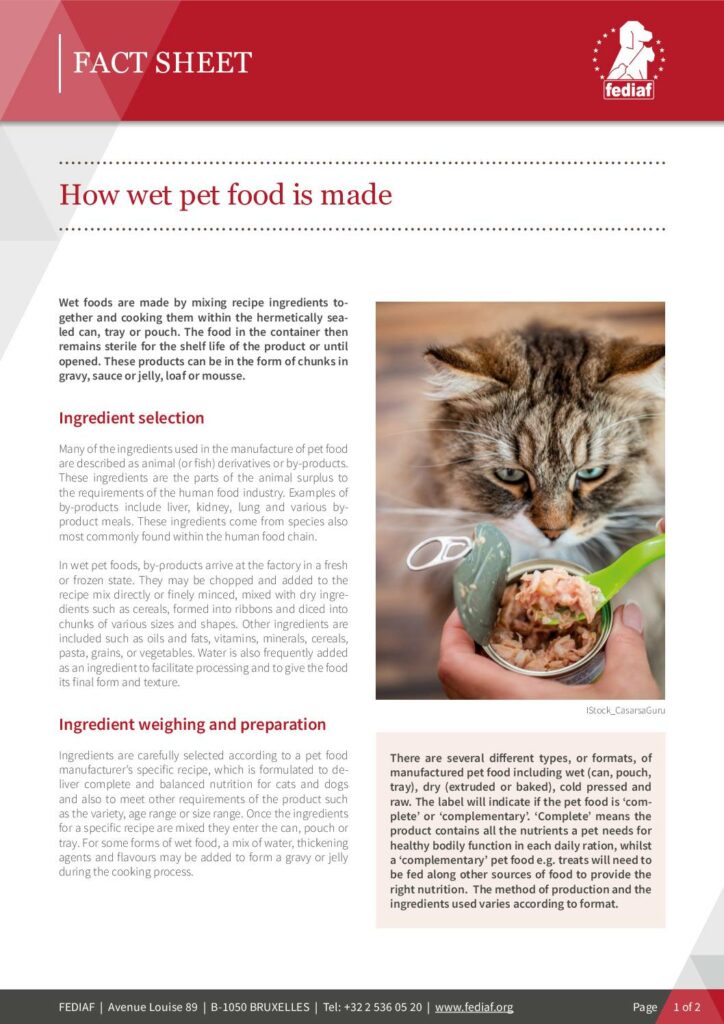There are several different types, or formats, of manufactured pet food including wet (can, pouch, tray), dry (extruded or baked), cold pressed and raw. The label will indicate if the pet food is ‘complete’ or ‘complementary’. ‘Complete’ means the product contains all the nutrients a pet needs for healthy bodily function in each daily ration, whilst a ‘complementary’ pet food e.g. treats will need to be fed along other sources of food to provide the right nutrition. The method of production and the ingredients used varies according to format.
Wet foods are made by mixing recipe ingredients together and cooking them within the hermetically sealed can, tray or pouch. The food in the container then remains sterile for the shelf life of the product or until opened. These products can be in the form of chunks in gravy, sauce or jelly, loaf or mousse.
Ingredient selection
Many of the ingredients used in the manufacture of pet food are described as animal (or fish) derivatives or by-products.
These ingredients are the parts of the animal surplus to the requirements of the human food industry. Examples of by-products include liver, kidney, lung and various by-product meals. These ingredients come from species also most commonly found within the human food chain.
In wet pet foods, by-products arrive at the factory in a fresh or frozen state. They may be chopped and added to the
recipe mix directly or finely minced, mixed with dry ingredients such as cereals, formed into ribbons and diced into
chunks of various sizes and shapes. Other ingredients are included such as oils and fats, vitamins, minerals, cereals, pasta, grains, or vegetables. Water is also frequently added as an ingredient to facilitate processing and to give the food its final form and texture.
Ingredient weighing and preparation
Ingredients are carefully selected according to a pet food manufacturer’s specific recipe, which is formulated to deliver complete and balanced nutrition for cats and dogs and also to meet other requirements of the product such as the variety, age range or size range. Once the ingredients
for a specific recipe are mixed they enter the can, pouch or tray. For some forms of wet food, a mix of water, thickening agents and flavours may be added to form a gravy or jelly during the cooking process.
Sealing and cooking
The can, pouch or tray is then sealed and enters a cooking process. The temperature and length of cooking, also laid down in the legislation, are carefully controlled in order to prevent spoilage over the shelf life of the product, as well as to optimise the taste and protect the required nutritional
content.
Cooling and labelling
After cooking products are cooled. Cans are labelled. Information on tray and pouch products is usually printed upon the packaging itself.
Storage and distribution
Individual containers are packed into boxes or trays and stored in warehouses before being dispatched to customers.
Pet food safety and quality
Whatever the pet food format, all pet foods are subject to strict legislation to ensure safe, quality products. In addition to the legislation, FEDIAF members follow industry Codes of Practice such as the Guide to the Manufacture of Safe Pet Food.
Download the factsheet or click here for more factsheets.
Please check out our video on how pet food is made here.
